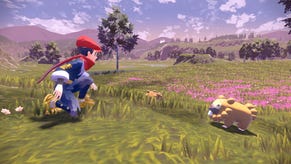Pok¨Śmon Sword and Shield Sinistea evolution method: how to evolve Sinistea into Polteageist with the Cracked Pot or Chipped Pot, including Phony Form and Antique Form Sinistea explained
It's getting very Antiques Roadshow in here.
Sinistea, one of the new Gen 8 Pokémon in Pokémon Sword and Shield, can evolve into Polteageist through the use of either the Cracked Pot or Chipped Pot.
Sinistea also has two different forms, Phony and Antique, which require a different type of pot to evolve.
Other Gen 8 Pokémon that have unique evolution methods, include Applin, Milcery, Sirfetch'd, Toxel and Yamask.
On this page:
- Where to find Sinistea in Pokémon Sword and Shield
- Phony Form and Antique Form Sinistea in Pokémon Sword and Shield explained
- Where to find the Cracked Pot and Chipped Pot in Pokémon Sword and Shield
- How to evolve Sinistea into Polteageist in Pokémon Sword and Shield
- How useful is Polteageist in Pokémon Sword and Shield?
Where to find Sinistea in Pokémon Sword and Shield
Sinistea can be only be found in Glimwood Tangle, which sits between Stow-on-Side and Ballonlea.
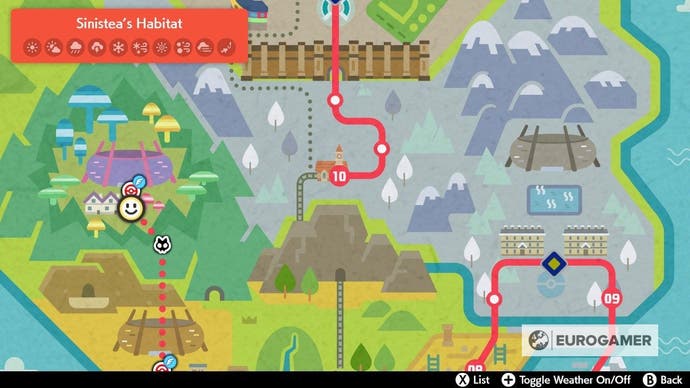
Like the majority of Pokémon in Glimwood Tangle, Sinistea is a random encounter in the long grass. It also has a low encounter rate, so be prepared to wait a while for a Sinistea to appear.
Phony Form and Antique Form Sinistea in Pokémon Sword and Shield explained
There are a lot of forgeries out in the antiques world and, it turns out, the same can be said for tea based ghost-type Pokémon.
Turns out that the majority of Sinistea's you encounter in the Glimwood Tangle are actually forgeries or, to be accurate, the tea cups they reside in are forgeries. These are the Phony Sinistea.
As the Polteageist Pokédex entry explains, "This species lives in antique teapots. Most pots are forgeries, but on rare occasions, an authentic work is found".
An Antique Sinistea or Polteageist will have a small little blue authenticity stamp on the underside of its bottom ridge, which, if you've watched a lot of Antiques Roadshow, is very important indeed.
The only times you can clearly see this authenticity stamp is when either Pokémon are Dynmaxing or when you select the 'Motion / Cry' option in the Pokédex.
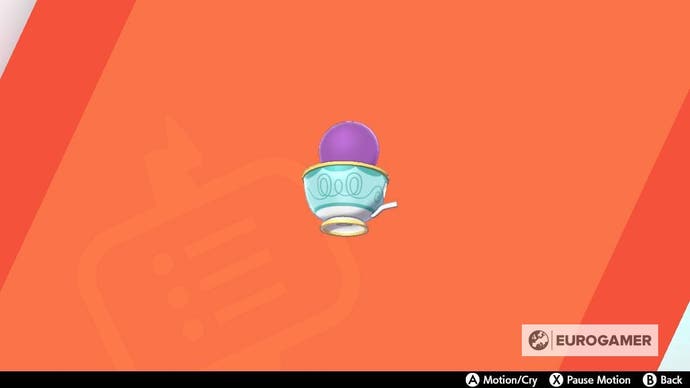
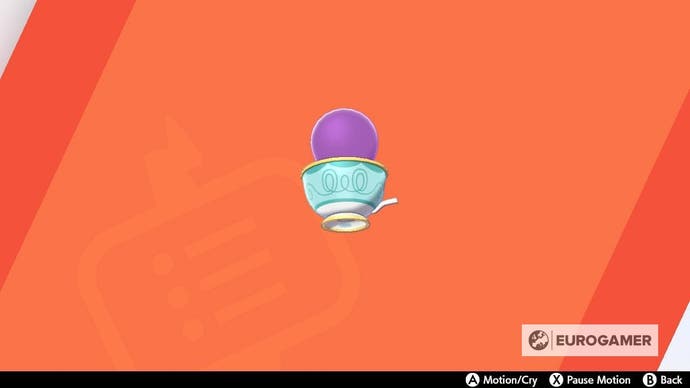
There is, thankfully, no stats or move difference between a Phony Sinistea or Polteageist and an Antique one, so don't worry if you catch a forgery; you do have a real Sinsitea, it just happens to live in a knockoff Ridgway.
If you do want an Antique Sinistea, however, be prepared to catch an awful lot of them, as they rarely appear in the wild. We caught 19 Sinistea and only had one rare form.
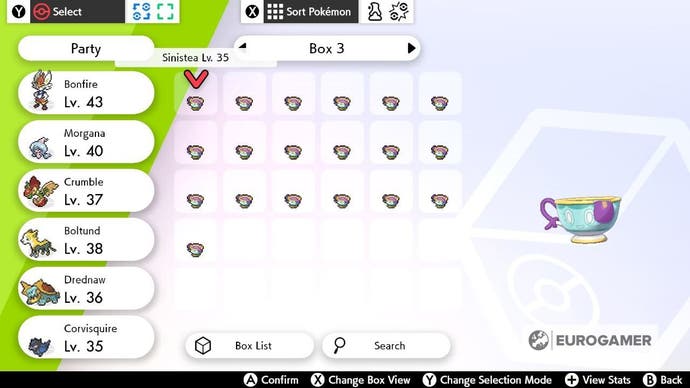
The only way to tell if you have a Phony Form or not is to see whether you can evolve Sinistea with the Cracked Pot. If you can't, then congratulations! You've got the real deal on your hands.
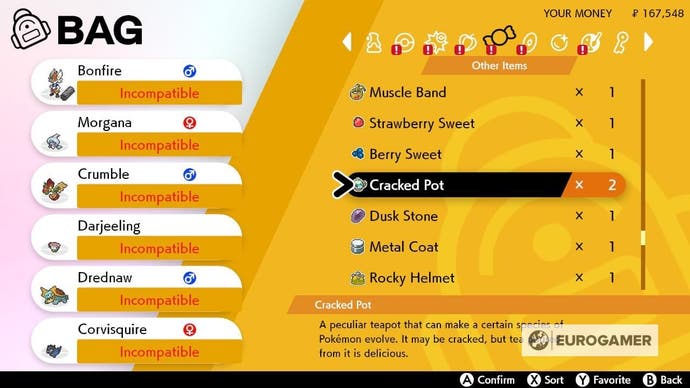
Where to find the Cracked Pot and Chipped Pot in Pokémon Sword and Shield
Both the Cracked Pot and Chipped Pot can be found in Stow-on-Side.
You can find one Cracked Pot hidden away behind the Pokémon Centre.
Begin climbing the stairs that lead to the Pokémon Gym, but, after a couple of steps, climb the ladder you see on your right.
Walk along the roof you've found yourself on and pick up the Cracked Pot, which sits near the jumpable ledge.

You can buy additional Cracked Pots and a Chipped Pot from the Bargain Seller in Stow-on-Side.
Every day he'll have a new item for sale and will tell you which one he'll be selling tomorrow. If you didn't buy yesterday's bargain, he'll also allow you to buy that one too.
The items the Bargain Seller sells are on rotation and the prices vary. This means you might have to wait a couple of days for your Chipped Pot.

How to evolve Sinistea into Polteageist in Pokémon Sword and Shield
Once you're ready to evolve your Sinsitea, open up your Bag from the X menu.
You'll need a Cracked Pot if you're evolving a Phony Sinistea and a Chipped Pot if you're evolving an Antique Sinistea.
Both the Cracked Pot and Chipped Pot can be found in the 'Other Items' section of your Bag.
Scroll down till you find your pot of choice, select it and then the option to 'Use this item.'
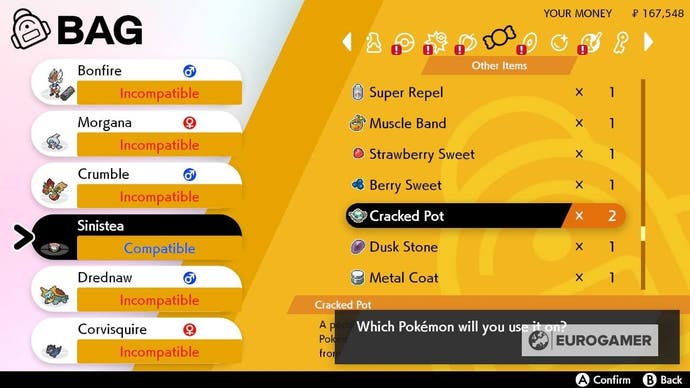
Finally, select your Sinistea to use the pot on it and it will happily evolve into a Polteageist.
With it finally in the wild, here's how to start the Crown Tundra DLC and our full Pokémon Crown Tundra walkthrough. Plus, here's how to catch Calyrex, Glastrier and Spectrier, the Regieleki and Regidrago puzzle solution and Regirock, Regice, Registeel locations, details on how to catch Legendary Birds Articuno, Zapdos and Moltres in the Crown Tundra, the Ultra Beasts and Necrozma adventure, Dynamax Adventures, including the legendries you can catch on these adventures, and the new Crown Tundra Pokédex and returning Pokémon explained. For Isle of Armor players, here's how to find the Slowpoke, where to find Max Mushroom locations, and how to get Kubfu, become best friends and evolve it, plus all Diglett locations too! For the base game, here's info on the ability to transfer Pokémon to Pokémon Home, the Wild Area, lists of all TM locations and TRs, all Galarian forms and finally our main Pokémon Sword and Shield walkthrough for the whole game.
How useful is Polteageist in Pokémon Sword and Shield?
When it comes to ghost-type Pokémon, Sword and Shield have a good collection.
Not only does it have good old Gengar, but a selection of new ghost-types, including the ground and ghost-type Runerigus and Dreepy and its evolutions, which are dragon and ghost-type Pokémon.
This offers you a lot more of choice if you're a ghost-type fan and sadly Polteageist does suffer because of this.
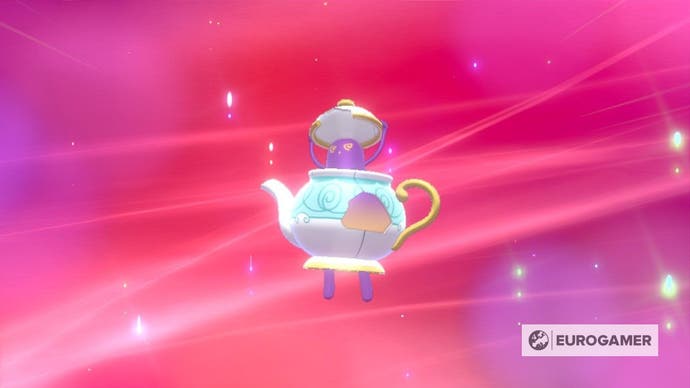
Since it's simply a ghost-type Pokémon, it doesn't have any of the advantages the dual type ghost Pokémon have. This includes a wider variety of both type advantages and attacks.
If you want a ghost-type Pokémon in your party, then Polteageist is a good fill in until you can catch a Dreepy, but don't consider making it a mainstay member, even if you have an authentic version.
If you need more advice on the unique evolution methods in Pokémon Sword and Shield, check out our guides on Applin, Milcery, Sirfetch'd, Toxel and Yamask.


